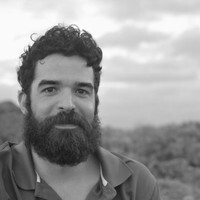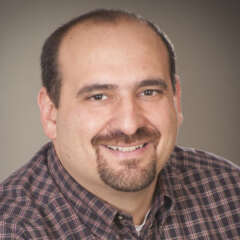Speakers
4 speakers
Date & Time
On Demand
Webinar
The hardest cyber problem to solve is not protecting agencies from today’s threats, or even tomorrow’s. It’s what will cybersecurity and its associated threats look like in a decade from now?
That is what Elena Peterson, a senior cybersecurity researcher at the Pacific Northwest National Laboratory in the Energy Department, thinks about every day.
“We do try to look into the future. We’re trying to figure out what the hard problems are going to be 5 to 10 years from now, and start to plan out what needs to be done now to be prepared for those hard problems,” Peterson said on the CISO handbook discussion. “We very much try to understand what the private sector is doing. We don’t compete with them. We try to fill the gaps, do the early stage research, may be do some of the very specific things that government needs compared for the enterprise writ large for cybersecurity. We work with those private industry companies in a lot of ways. And we work for the government, but also alongside the government and those and the private industry.”
In her Richland, Washington lab, Peterson tests, fails and succeeds every day in cyber areas ranging from reverse engineering to malware research to cybersecurity for 5G networks and components.
“We tend to look at research across the gamut from very fundamental things you need to understand and do from applied research, building tools, creating capabilities and even into operational space,” she said. “It’s important for us to be in that world to really understand what the gaps and the needs are, for our sponsors, for the mission, for the country and for the agencies that we work for.”
Helping power grid operators
One areas of focus for PNNL is how to better protect critical infrastructure, including the power grid, and how to make it more resilient.
Peterson said PNNL is doing some research into adaptive control algorithms that will give power grid operators an understanding and the ability to control these systems under threat even if that threat is a hurricane and not necessarily a cyber threat.
“This involves some artificial intelligence and machine learning. As a DOE lab, we do a good amount of work in operational technology, especially around the power grid,” she said. “One of our one of our projects that we’ve called Shadow Figment is a deception technology. It deploys decoys that a draw the attacker toward an apparently easier and high-value target, keeping them away from the real high-value targets, and giving us time to figure out what’s happening and to mitigate that threat. That technology is patent pending.”
Another project called resilience through data drive intelligently designed control is trying to design cybersecurity protections into control systems.
“This one is looking to be much more resilient, doing intelligent testing and adaptive control algorithms through observational understanding and characterization of these control systems under very adverse conditions. That can be a cyber attack or a hurricane that might take out a substation or something like that,” Peterson said. “We look toward resilience and we define resilience as staying on mission, even though you’re under attack. So that means continuing, moving your resources, marshaling resources in a way that you can still do what needs to be done whatever that control system might need to be doing while defending the attack, but at the same time, learning from that attack, growing stronger from that attack. In this case, it’s about some automated control of doing that kind of operation and having that being much more automated than by hand.”
AI/ML playing bigger roles
Not surprisingly, artificial intelligence, machine learning and advanced analytics are front and center in many of these projects.
Peterson said while many projects remain in the early stages in using these tools, one ongoing effort around cybersecurity and 5G to bring computer to the edge is showing promise.
“In order to do that, we have to understand how we distribute AI to the different systems. Today, AI is pretty much put on a pretty big piece of hardware so it can crunch through all of the things. How do we do that on very tiny pieces of hardware that may be sitting on a light pole, supporting a 5G network?” she said. “We are doing some research in how we distribute artificial intelligence and do the kind of analytics that might need to be done at the edge when you bring those things together. That is a focus for us. That will help science in general. It will help cybersecurity do its thing.”
With the expansion of 5G, this research becomes more important as the number of devices continue to increase.
Peterson said the idea is how best to protect at the network layer instead of at the device layer.
End goal is commercialization
A major goal of Energy Department labs is to take their research and get it commercialized in the private sector so utilities and other critical infrastructure operators have access to the innovations.
PNNL, like many DoE labs, receives funding from headquarters, but also from other agencies interested in research in specific areas. Peterson said the lab also accepts funding from private sources, but she stressed that PNNL or any national lab doesn’t compete with the commercial companies, rather they are trying to advance the learning and understanding in specific areas.
“We engage to either do the foundational research that will then help us convince our sponsors that fund us that we have what we need to do the next step to really create something that could be operationalized and help them. In the case of Shadow Figment, we got to the point where we actually did we built enough of a prototype that we could write patents for it, and then we could engage the private industry. The next step there is take these tools and find folks who will purchase the intellectual property or work with us in some way. Then they can build the tools and make them commercial off the shelf, sell them back to the government so that the government can use them. We’re a research organization, so we take it to about that level, and then work with industry partners to really get it out in the world.”
Learning objectives:
- Cybersecurity research at the Pacific Northwest National Laboratory
- Protecting the attack surface through IT modernization
- Industry analysis
Complimentary Registration
Please register using the form on this page or call (202) 895-5023.
Speakers

Elena Peterson
Senior Cyber Security Researcher
Pacific Northwest National Laboratory

Matt Lembright
Director, Federal Applications
Censys

Jason Miller
Executive Editor
Federal News Network

Justin Doubleday
Reporter
Federal News Network
Please register using the form on this page.
Have questions or need help? Visit our Q&A page for answers to common questions or to reach a member of our team.

